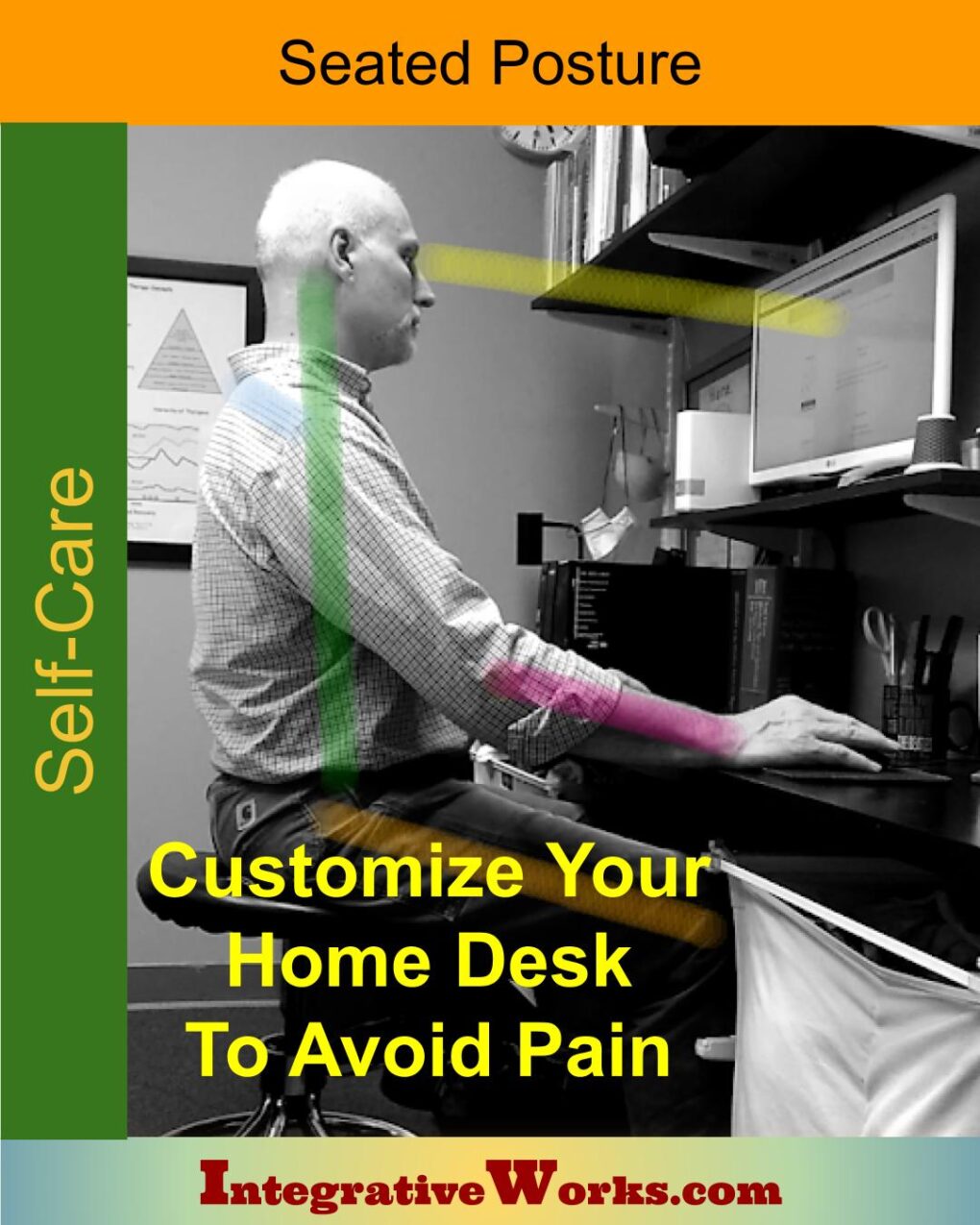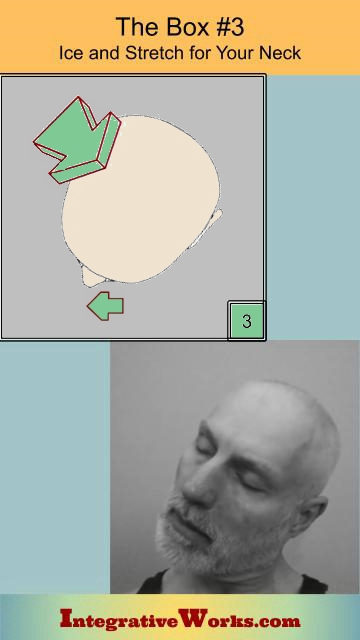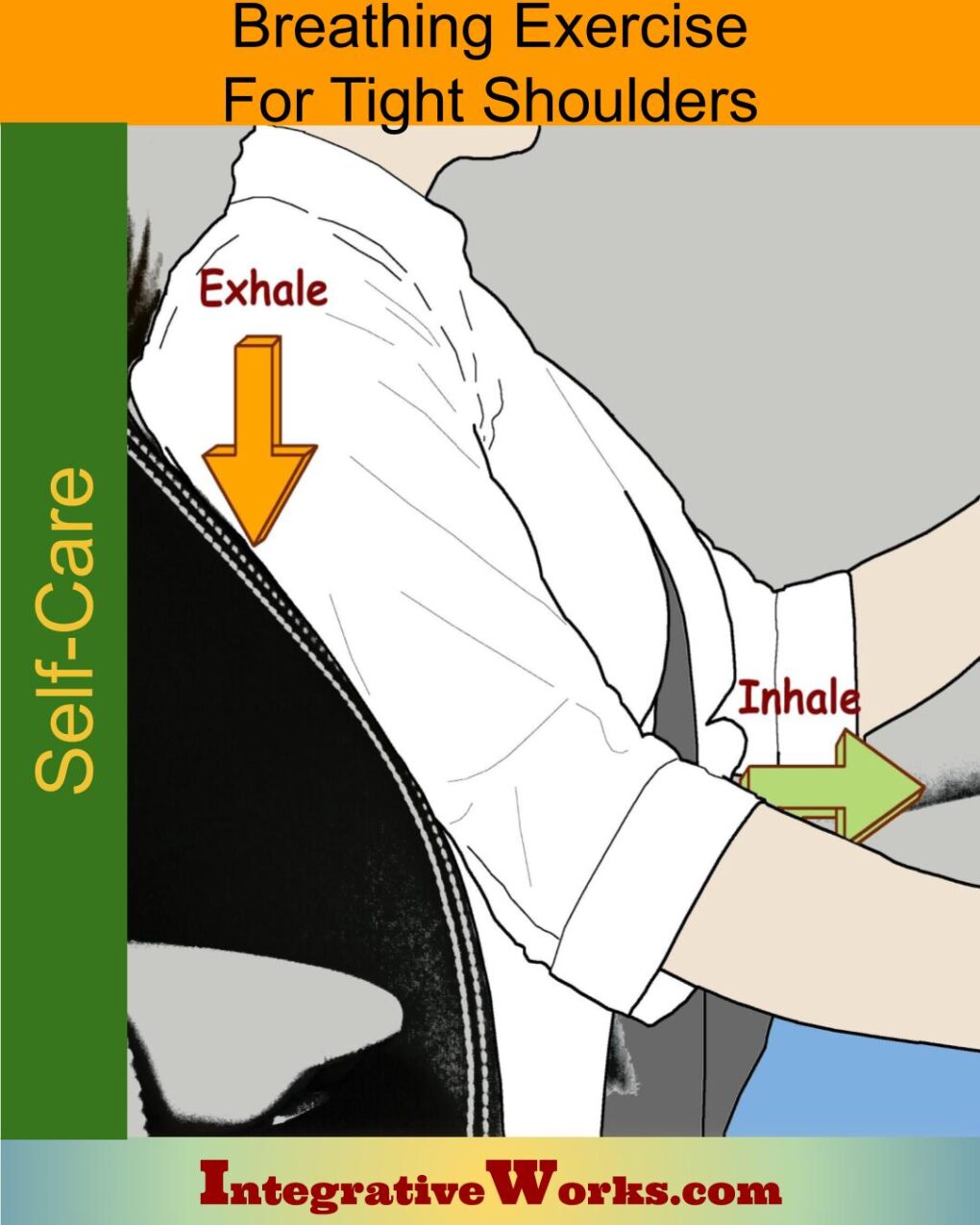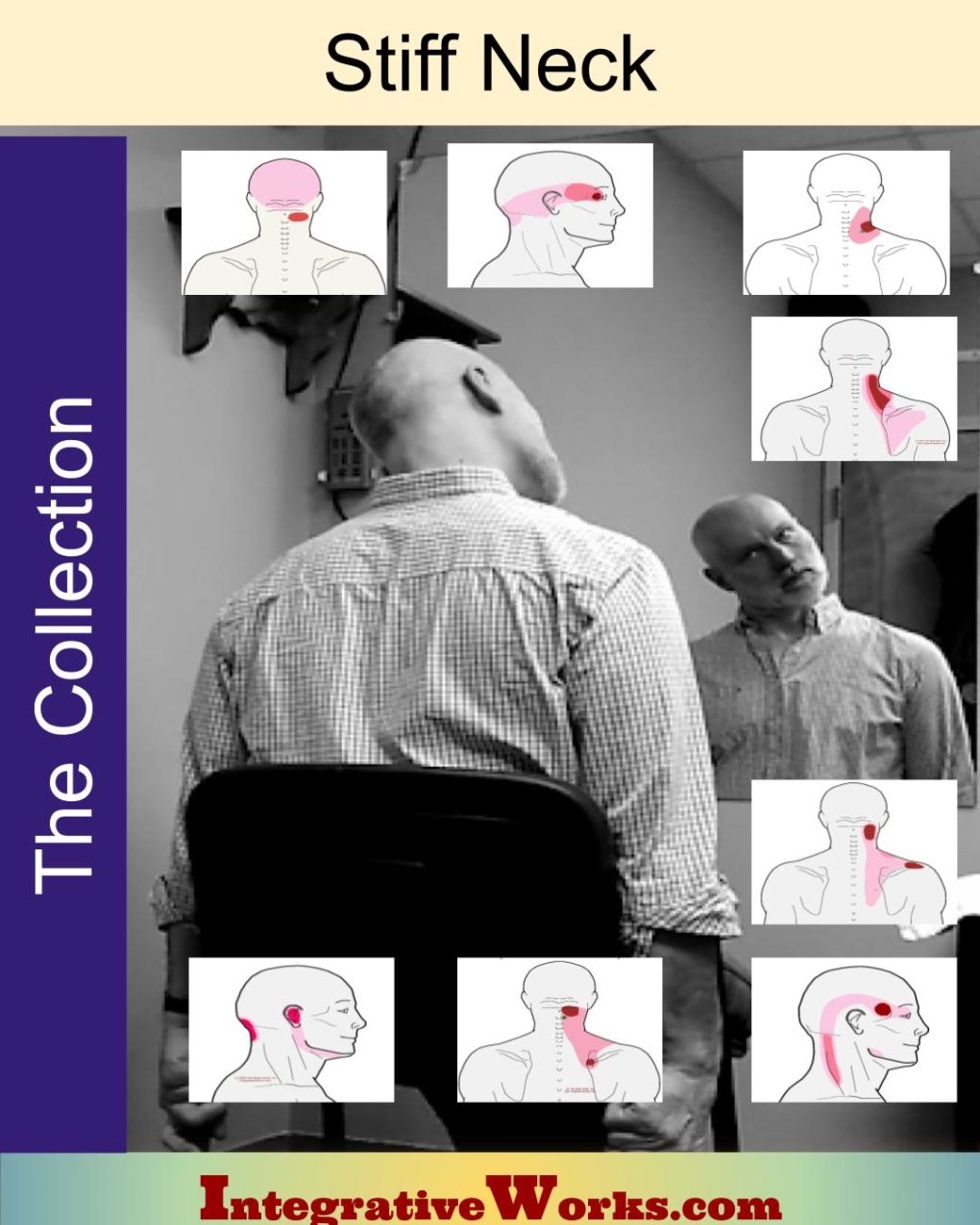Table of Contents
- Activities to Avoid or Change
- For Temporary Relief
- Stretches and Exercises for Longer-Lasting Relief
- Yoga Corner
Here, you will find ways to get relief on your own through self-care for stiffness up the side of the neck. If you’d like to read more about how people describe the pattern and what aggravates it, look at this other post.
Getting relief for this type of stiffness up the side of the neck is occasionally very quick and easy, especially when you are active and healthy. For most people, it is an occasional problem. In those cases, they can get a lot of relief with icing and stretching. They can minimize pain and stiffness with a few minutes of attention a couple of times a day. When the pain and stiffness are severe, you should see a professional. They can address underlying structural problems and help manage your self-care to be more effective.
Activities To Avoid or Change:
Self-care for stiffness up the side of the neck usually involves changing activities that tense the shoulders while holding them unevenly. Here are a few suggestions:
- Avoid unevenly leaning the handrails while using a treadmill.
- Have your PT help you with changing how you use your cane.
- Get reading glasses with the proper focal length.
- Don’t hold the phone on your shoulder with your ear
- Sit up straight when you’re chopping nuts, making crafts, or other activities where you crane your neck, move your shoulder around and repeatedly move your head side to side.
Improve the ergonomics
at your home or office.
Stiffness up the side of the neck is often a problem with poor posture while working at a desk. This post offers some great ideas for actively sitting without support or sitting with supports that help you avoid pain and fatigue. There are also suggestions about a few useful accessories.
For Temporary Relief:
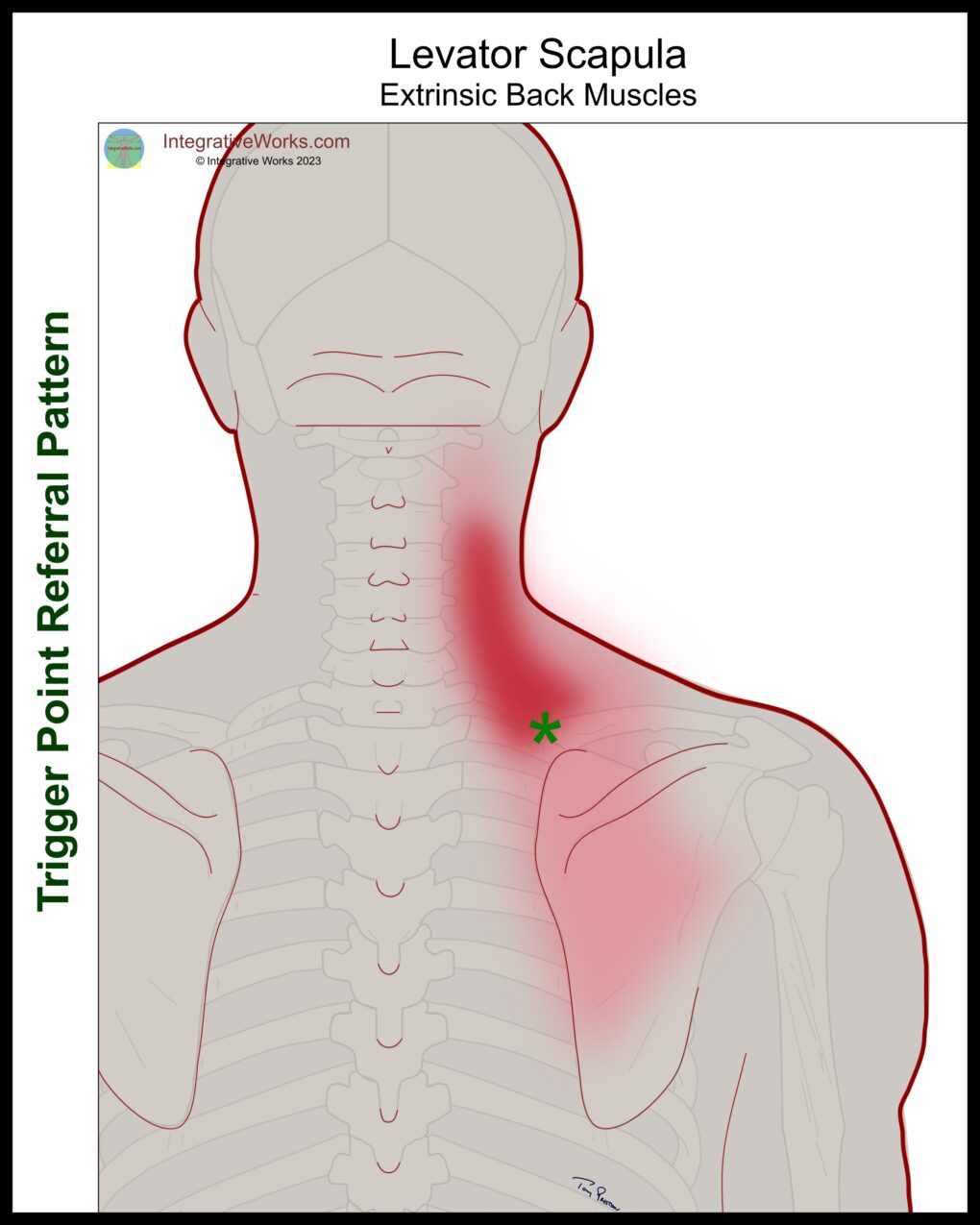

For quick relief, use a vapocoolant patch like IcyHot. Place it so that the bottom corner of the patch runs along the top edge of the shoulder blade, and the patch extends up the side of your neck, where it hurts. Make sure that you cover the green asterisk in the pic. It usually offers a lot of relief from stiffness in your neck while turning your head. You can get these on Amazon. Most people use the medium size in this area, sometimes a small one.
These self-care activities, like over-the-counter drugs, are not intended to replace appropriate medical attention. If you have concerns about these self-care activities, get help from a professional. Use these suggestions and strategies with discretion and at your own risk. See your doctor when your pain is severe, persistent, or not responding to these simple suggestions.
Stretches and Exercises for Longer-Lasting Relief:
The Box is a reliable way to deal with this problem.
Make sure that you follow the instructions for the top of The Box and loosen the upper neck first. This stiffness will be resistant if you don’t release the restrictions at the top of the neck first.
After doing the upper cervicals, do a complete round of the lower neck. You will find that stretches #2, #3, #9, and#10 are usually the stiffest.
Focus Your Efforts
Focus on the tight and restricted areas. Stretching the muscle, and when turning your neck, it may be stiff and uncomfortable. Still, don’t overstretch the back of your neck. If you have Forward-Head Posture, you may find that stretching the base of your neck in the front to be very useful in offering relief. Releasing the muscles around the collarbone brings the head back. In effect, this takes tension off of the levator scapula.
Be gentle and persistent in your stretching, Don’t do this forcefully, or it may just be extra painful. The Box only takes about 6 minutes, but you want to take longer. This allows you to focus on gentle repetitions that work this loose. Don’t hold the stretches longer. Instead, do more repetitions of very gentle stretches.
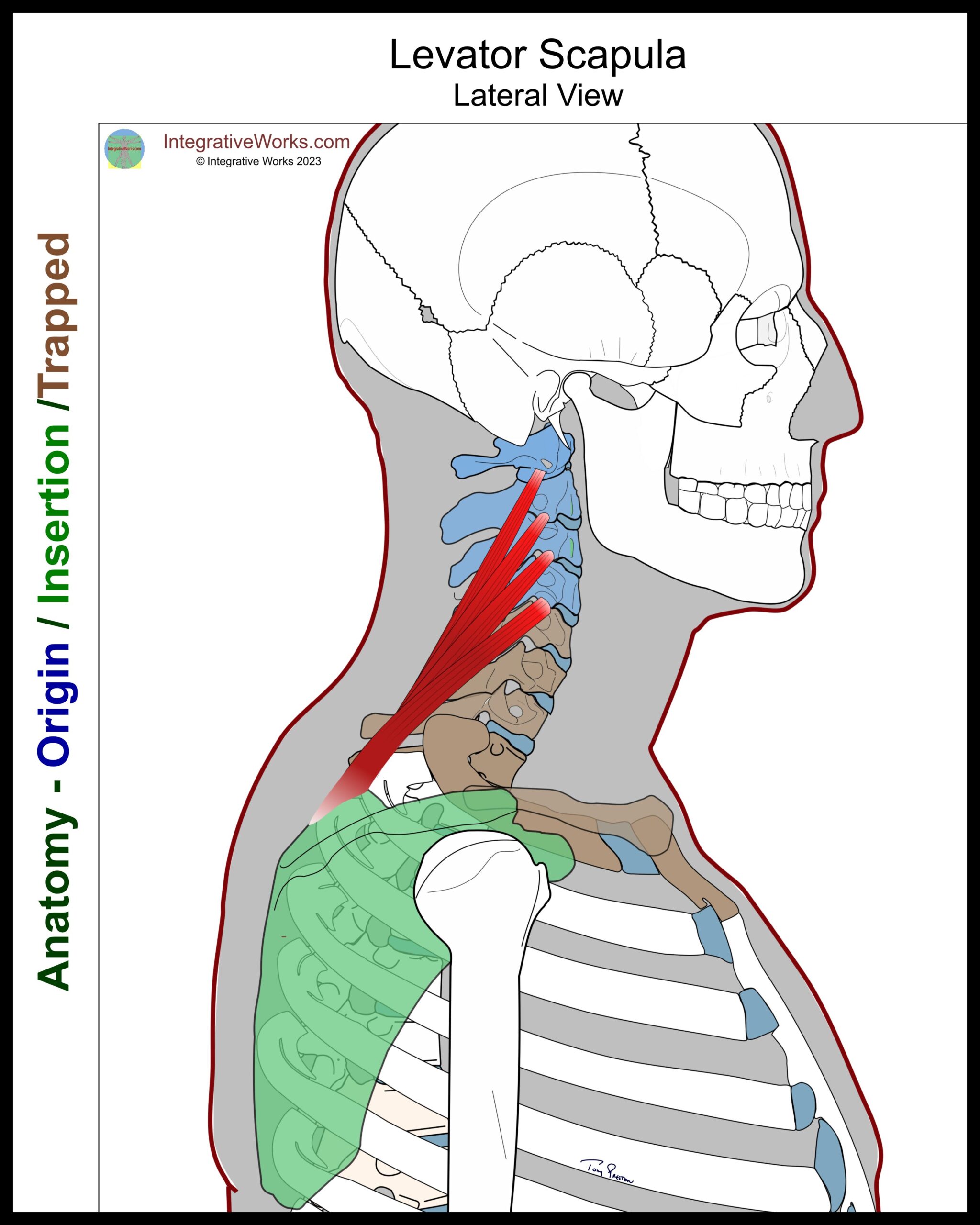
Avoid Overstretching
Look at the angle of the levator scapula in this illustration. Focus on lengthening the base of the neck in the front. Don’t overstretch and weaken this muscle. In Forward-Head Posture, it is already weakened.
Stretches along the back of the neck may feel like they hit the spot, but they tend to overstretch this area. The Box is great for releasing key muscles at the top of the neck that holds the head onto the neck.
Do You Have Forward-Head Posture?
This muscle is often overstretched and overpowered by Forward-Head Posture. As the head moves forward, the opposing muscles become short and strong. Consequently, this muscle becomes overstretched and tight. Once the head has become imbalanced over the torso, this muscle fights to rebalance posture.
If you have Forward-Head Posture, review this collection, especially the self-care suggestions for changing your environment and the Tuck, Tilt, Turn, and Lift exercise.
Breathing to Relax Shoulders
The exercise in this post is really great for releasing tension in the head, neck, and upper back. It is particularly good at strengthening the muscles that lower shoulders and releasing the muscles that keep them high and tight.
Sometimes, it’s more involved.
Is Your Neck Extra Stiff and Painful?
Sometimes, turning your head is strongly limited by pain. This indicates that more than one of the muscles that creates a “stiff neck” is involved. Check out these posts on a stiff neck.
In this case, if the problem does not resolve with home care, consider professional help from your bodyworker. They will offer quicker relief, have longer-lasting results, and keep you focused on effective self-care.
I’d love your feedback on how this works for you and any suggestions you might have.
Email me at integrativeworks@gmail.com.
Yoga Corner
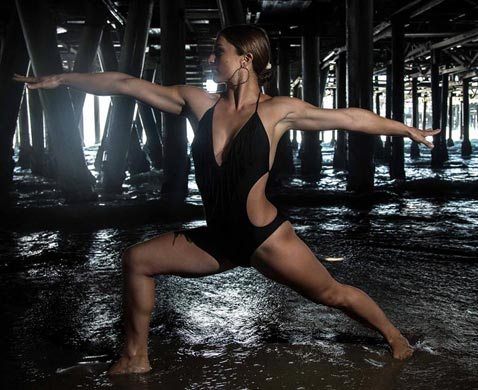
Keep Your Head High
Poses that keep your head upright will be gentler on this pattern. A joint problem in the upper neck perpetuates this trigger point, Poses that are upright and tilt from side to side work well for gentle loosening. They often release this with a little click that suddenly gives more range of motion and reduces the pain.
Don’t Aggravate It
Poses that pull your head forward may feel good at the moment. In the long run, however, they accentuate Forward-Head posture and support this painful problem.
Poses where you have bent over or laid on your side strain this pattern. Be gentle and careful with those poses until you get this pattern released.
Support Integrative Works to
stay independent
and produce great content.
You can subscribe to our community on Patreon. You will get links to free content and access to exclusive content not seen on this site. In addition, we will be posting anatomy illustrations, treatment notes, and sections from our manuals not found on this site. Thank you so much for being so supportive.
Cranio Cradle Cup
This mug has classic, colorful illustrations of the craniosacral system and vault hold #3. It makes a great gift and conversation piece.
Tony Preston has a practice in Atlanta, Georgia, where he sees clients. He has written materials and instructed classes since the mid-90s. This includes anatomy, trigger points, cranial, and neuromuscular.
Question? Comment? Typo?
integrativeworks@gmail.com
Interested in a session with Tony?
Call 404-226-1363
Follow us on Instagram

*This site is undergoing significant changes. We are reformatting and expanding the posts to make them easier to read. The result will also be more accessible and include more patterns with better self-care. Meanwhile, there may be formatting, content presentation, and readability inconsistencies. Until we get older posts updated, please excuse our mess.


